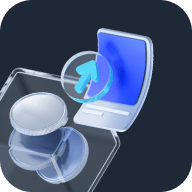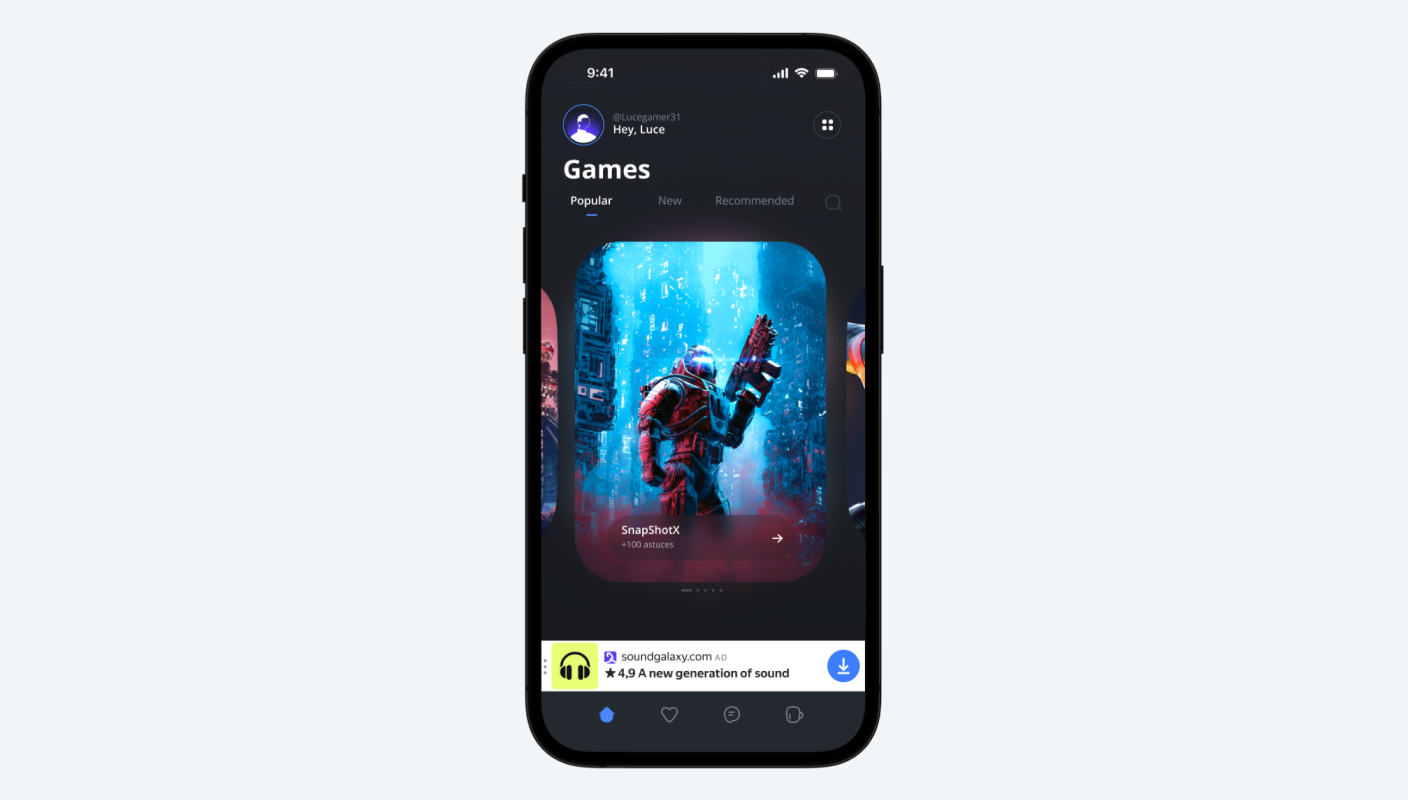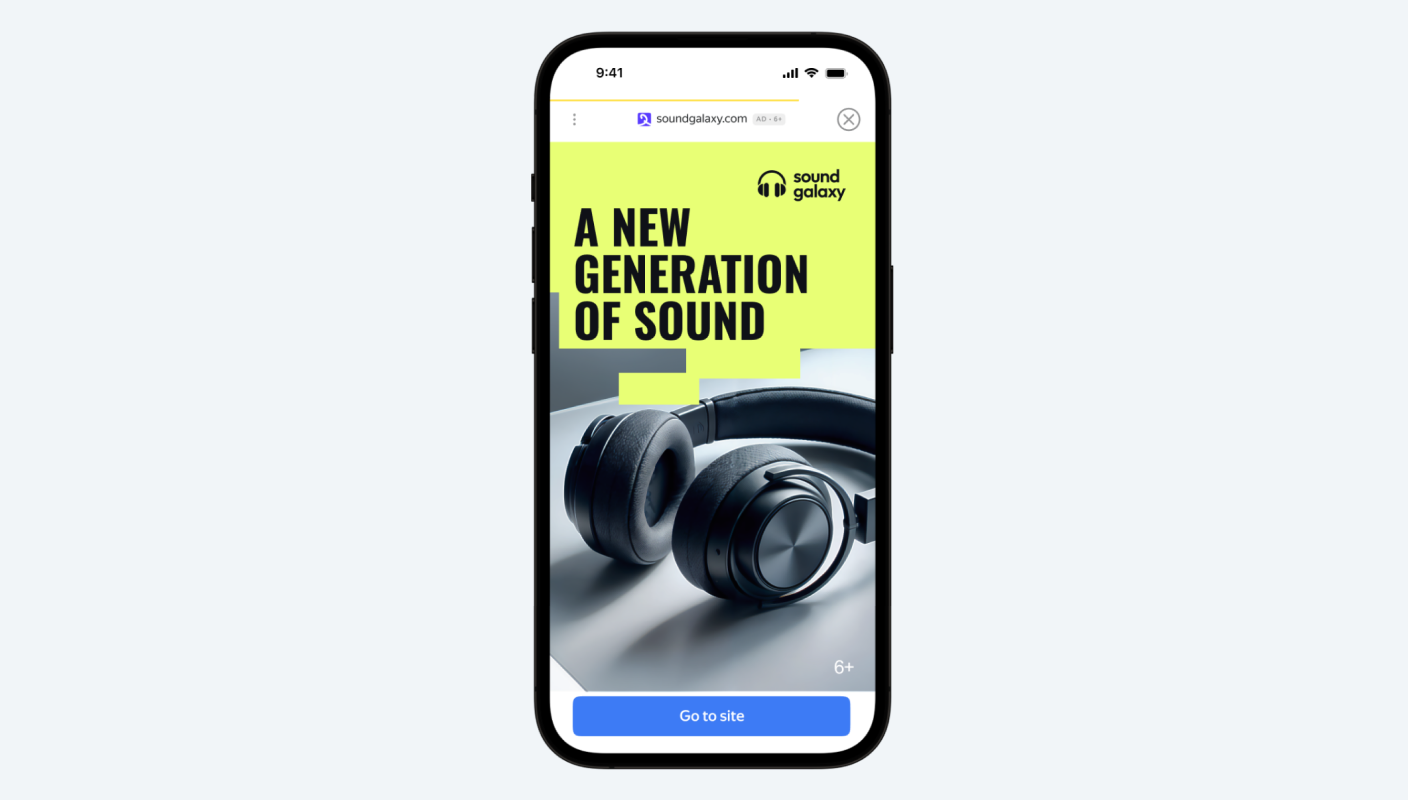Monetizing iOS apps: smart strategies to drive revenue


What are the Popular Monetization Strategies for iOS Apps?
Before choosing a path, it helps to understand the core monetization strategies used by successful iOS app developers. Let’s break down the most common approaches — and how they actually work in real life, both alone and together.
1. In-app Purchases (IAP)
For many iOS app developers, the in-app purchase (IAP) model is where revenue begins to scale. It offers users a way to unlock features, content, or upgrades directly within the app — without needing to leave the interface. But while the concept sounds simple, the execution offers surprising flexibility.
There are four primary types of IAPs. Consumables are items that can be used once, like extra lives in a game or digital currency. Non-consumables unlock features permanently — think a one-time payment for a premium photo filter pack. Then there are non-renewing subscriptions, like a 3-month pass to a course library, and auto-renewable subscriptions, which bill users at regular intervals until canceled. Each creates a different revenue stream, and you choose depends heavily on your app’s content and user habits.
Fitness apps, for example, might offer guided meditation packs as consumables and premium tracking tools as non-consumables. Meanwhile, productivity apps often lean on subscription models that renew automatically, ensuring users maintain long-term access to key features and receive regular content updates.
Remember getting stuck on a game level and instantly buying that extra life or power-up? That’s the magic of in-app purchases — they meet users in the moment of need. But timing here is everything. Prompt too soon, and it feels pushy. Too late, and the user’s already gone. That’s why onboarding experiences and well-placed prompts are essential. Presenting upgrades at just the right moment, when users are invested, can be the difference between a passive user and a paying one.
2. In-app Advertising
Scroll through your favorite social network and you’ll notice a common thread: they’re built on in-app advertising. This approach to mobile monetization is one of the most accessible ways to additionally generate revenue, especially for free apps with large user bases. Well-known applications that use in-app advertising in free versions include: Candy Crush Saga, Duolingo, Spotify.
Different app categories rely on different formats. Casual games often include banner ads at the bottom of the screen or interstitial ads between levels. Streaming and media apps lean into video clips — especially rewarded videos that trade a few seconds of ad time for access to premium functions. Utility apps may use native ads, seamlessly integrated into the content flow.
But as many developers have learned, there’s a fine line. Too many ads — or the wrong type — can ruin the user experience. That’s why successful apps focus on thoughtful integration: ads that don’t interrupt, overwhelm, or feel out of place.

Looking to maximize your app’s ad revenue without losing user trust?
3. Paid Downloads
Before subscriptions and freemium models took over the charts, there was a simpler way to monetize Apple apps: one-time purchase. Users pay once to download an app — and that’s it. No locked features, no ads, no upgrades hidden behind paywalls. This model still has a place in the current mobile app monetization strategies, especially for paid apps that offer unique or professional-grade features.
Apps in categories like productivity, creativity, and niche business tools — think PDF editors, advanced calculators, or habit trackers — often use paid downloads to highlight the app’s standalone value. For developers, the appeal lies in immediate revenue and simplicity. You set a price, offer a clear value proposition, and receive payment upfront. No subscription churn, no ongoing purchase prompts.
But there’s a reason this model represents only around 30% of app store offerings today — with 4.61% coming from the Apple App Store. Many app users hesitate to buy before trying. Without a strong app reputation or glowing reviews, even a small price tag can cause friction. Another challenge is piracy, particularly outside the App Store ecosystem, which can impact market share and long-term growth.
Pricing also demands careful thought. Set it too high, and users bounce; too low, and it may not cover costs. That’s where competitive pricing comes in — benchmarking against similar apps and balancing expectations with actual content value.
Another important factor? Trust. Paid apps carry an unspoken promise: if users pay, they expect ongoing support. That means continuous updates, bug fixes, and, in many cases, content expansions. It’s not just about getting someone to download — it's about proving that the decision was worth it.
So while paid downloads won’t suit every app, they remain a powerful option for developers with valuable content and a strong case for upfront commitment. Used wisely, they reflect confidence in what your mobile application delivers — and in the willingness of users to invest.
4. Subscription Models
If there’s one app monetization method that’s reshaped the mobile economy, it’s subscription models. Rather than asking users for a one-time payment, developers offer monthly subscriptions, yearly subscriptions, or subscriptions that unlock ongoing access to valuable content or features. This structure doesn’t just create a predictable revenue stream — it deepens customer loyalty by tying value to continued engagement.
Apps that are regularly updated — such as language learning platforms, streaming services, music applications or even dating apps — are prime candidates. Take Netflix, Apple Music or a paid version of Spotify.
Think of it like a networking event — you make first contact during the trial, and the subscription is where the real relationship begins. Once users feel the value, paying monthly doesn’t seem like a big ask — it feels like a logical next step. But here’s the challenge: users expect clarity. Vague terms, hidden fees, or unclear upgrade paths lead to cancellations or distrust.
Beyond transparency, the burden falls on developers to keep things fresh. Content updates must be frequent and meaningful — otherwise, app users will question why they’re still paying. That’s why many app developers plan seasonal content drops, premium-only features, and access to exclusive communities to reinforce the value of the monthly fee.
In the right hands, subscriptions transform a mobile app from a single download into a dynamic platform — earning not just income, but lasting relationships with its audience.
5. Free Trial
Sometimes, the best way to show value is to give it away — at least for a while. Time-limited trial model allow users to explore an app’s full features for a short period, typically for14 day or 30 days. After that, they must decide whether it’s worth paying for continued access.
A strong example is Praktika, an application for learning languages with AI, which offers a 7-day window where users can test it. It’s a clean, direct approach to user conversion, relying on the belief that the app will prove its value on its own.
This model is especially useful when launching a fail-proof application with a clear value proposition — where users only need a little hands-on experience to become loyal customers. It also works as a promotional tool, helping apps gain traction and early feedback without upfront cost barriers.
However, there are a few challenges to consider:
- Financial uncertainty — revenue depends on conversion, not downloads
- High expectations — users will judge the app within a short window
- Bug risk — any flaw during the trial can derail trust permanently
That’s why MVP testing (minimum viable product) is crucial before launching a free trial. You want a clean, reliable version that represents the app’s potential without distractions or errors.
When implemented well, free trials become more than a sales tool — they become a learning mechanism, offering insight into user behavior and refining both the product and its positioning before scaling.
6. Freemium Model
Ever downloaded an app “just to try it,” only to realize a week later you’d happily pay to unlock more? That’s the power of the freemium model: it gets users in the door with no pressure, then earns their trust one tap at a time. In this approach, users can download and use a free but limited app, while extra features or full access require payment. It’s a model built on flexibility, giving people the chance to explore an app’s value before committing financially.
Take Telegram, for example. Its basic version of messenger with calls and file exchange. However, a more advanced version, Telegram Premium, is available only via payment. This structure encourages users to get comfortable with the platform, then pay to unlock complete functionality when they need extra features, like set the status, choose the sticker pack or have the opportunity to get the transcription of video or audio messages.
Key benefits of the freemium model include:
- Wider reach through zero-cost entry, encouraging more app downloads
- Conversion opportunities at key moments, such as feature prompts during use
- Monetization flexibility when paired with ads or trials
The freemium model works best when paired with a hybrid approach, such as integrating in-app advertising or offering trials for premium users. It’s especially effective in entertainment, fitness, and mobile applications where value unfolds gradually.
For developers focused on audience growth, this model delivers wide reach and low entry barriers.

Looking for a smarter way to monetize your freemium app?
Apps for Revenue
It’s easy to admire the success of popular apps — those sleek icons topping the charts — but behind many of them is a carefully engineered monetization strategy. According to recent forecasts, the App Store revenue is expected to hit $185 billion by 2025. But that headline number masks a truth developers know all too well: most of that income goes to a small percentage of apps that manage to get both user experience and revenue flow just right.
For independent developers and studios without big-name backing, building a breakthrough offering means thinking beyond code. It requires a clear vision for how the app will sustain itself — whether through purchases, subscriptions, or hybrid models. Monetization isn’t just about making money; it’s about building long-term stability and growth. And choosing the right approach is often what separates a promising idea from a viable product. In the sections that follow, we’ll explore how to make that choice strategically — and what the top performers are doing differently.
Discover where digital advertising is headed next
What is Monetization for iOS Apps?
iOS app monetization refers to the process of generating income from an app after it's live on the App Store. Common methods include in-app purchases, subscription models, and freemium approaches, where basic use is free but advanced features require payment. To create consistent revenue streams without disrupting the user experience, many developers turn to advertising — often through platforms like the Yango Ads Ad Network.
Key Features of iOS App Monetization
When it comes to iOS app monetization, developers benefit from a premium ecosystem that supports multiple revenue streams. Whether through in-app purchases (IAPs), subscriptions, or advertising, iOS apps consistently achieve higher earnings — especially in Tier-1 markets.
One of the standout aspects of iOS monetization is its ability to generate high eCPM (effective cost per mille) rates. This is most evident in premium ad formats, such as:
- Rewarded Video Ads: Generating between $15–25 per 1,000 views in Tier-1 regions (APAC: China, Hong Kong, Vietnam, South Korea; MENA: Türkiye).
- Interstitial Ads: Earning $7–12 per 1,000 impressions under similar conditions.
But the strength of iOS monetization goes beyond eCPM. It includes a combination of user engagement, strict platform policies, and an ecosystem designed for premium experiences. Below, we’ve summarized the main features that define iOS app monetization:
|
Factor
|
Description
|
|
Ad Revenue (eCPM)
|
High eCPM, especially in Tier-1 markets. Rewarded Video: $15-25 Interstitial Ads: $7-12
|
|
User Tracking
|
Limited by App Tracking Transparency (ATT). IDFA requires explicit user consent. 30-50% eCPM drop for ad-dependent publishers after ATT.
|
|
Ad Formats
|
Focus on premium formats, especially rewarded video ads.
|
|
Monetization Models
|
More users prefer subscriptions and IAPs. Brand advertising (CPM model) is more valuable.
|
|
App Distribution
|
Only available through the App Store. No alternative app stores allowed.
|
|
Platform Policies
|
Stricter regulations, especially for subscriptions. Limited ad replacement options.
|
|
Recommended Approach
|
Focus on premium ad formats, implement subscription models, and use contextual targeting.
|
|
Summary
|
High eCPM potential with a premium user base. iOS apps follow SKAdNetwork standards.
|

Ready to scale your app with smart, non-intrusive monetization?
Trending in iOS Monetization
There’s no single formula for success when it comes to monetizing apps for Apple devices — and that’s exactly why more developers are turning to hybrid monetization. By blending models like free trials with subscriptions, or pairing freemium access with well-placed advertisements, developers can reach broader audiences and generate more consistent revenue. But there’s a catch: when too many layers stack up, complexity creeps in. Users can feel overwhelmed or unsure about what they’re paying for. The key is balance — combining models thoughtfully so each supports the other.
What is the Best iOS App Monetization Strategy?
Choosing the right monetization strategy isn’t about copying what’s popular — it’s about aligning your model with your app’s purpose, audience, and lifecycle. Some strategies, like in-app purchases, excel in gaming apps where users make frequent microtransactions. Others, like paid subscription models, work best for platforms with constant content updates or evolving tools.
Meanwhile, freemium models are great for apps seeking a large user base, while advertising remains a solid option for high-volume, free-to-use platforms like news, fitness, or entertainment apps. For paid downloads, success depends on a strong brand or niche offering.
Here’s a quick comparison of how they stack up:
|
Strategy
|
Best For
|
Pros
|
Cons
|
|
In-App Purchases
|
Games, social platforms
|
Flexible pricing, scalable revenue
|
Requires strong UX to prompt sales
|
|
Subscription Models
|
Tools, media, learning apps
|
Recurring revenue, loyalty
|
Demands regular updates
|
|
Freemium Model
|
Broad audience growth
|
Low barrier to entry
|
Conversion may be low
|
|
Paid Downloads
|
Professional/niche apps
|
Immediate income
|
Hesitation before purchase
|
|
Advertising
|
High-traffic, free content apps
|
Passive income, wide coverage
|
Can harm UX if overused
|
Ultimately, advertising offers the highest earning potential, especially when it’s thoughtfully integrated. And for developers who combine advertising with other models like in-app purchases, the result can be even more impressive — creating a balanced, high-revenue strategy that scales.
What Are Some Best Practices for iOS App Monetization?
As privacy rules evolve and user expectations shift, best practices for iOS app monetization are changing too. Today’s most successful developers rely on hybrid monetization strategies — adapting models, experimenting with combinations, and focusing on the full user experience.
Here’s what top-performing teams prioritize:
- Understanding who your users are and what they need
- Designing onboarding flows that promote engagement
- Blending models like ads, subscriptions, and IAPs
- Adding clear value with paid upgrades
- Keeping all pricing simple and transparent
Let’s explore these in more detail.
1. Understand Your Audience and Market
Effective monetization starts with audience understanding. Use market research — interviews, surveys, analytics — to define your buyer personality and learn how they interact with your app. Once you know your users’ goals, behaviors, and preferences, you can choose a monetization method that aligns with their expectations and keeps them coming back.
2. Optimize User Onboarding and Engagement
Your user onboarding flow sets the tone for retention. A clear, guided introduction — supported by tutorials, personalized notifications, and smart in-app messaging — helps users understand both the app’s core features and its premium functionality. Done well, this stage builds trust and improves engagement, leading to higher conversion rates later.
3. The Power of Hybrid Monetization Strategies
No single model fits every app — and that’s the strength of hybrid monetization. By blending multiple revenue streams, such as subscription models, in-app purchases, and targeted advertising, developers create a flexible approach that adapts to user preferences and market changes. This monetization mix also helps mitigate risks from Apple’s privacy shifts and IDFA limitations.
4. Provide Value with Premium Features
Whether it’s exclusive content, enhanced tools, or smoother performance, your premium features must offer tangible value addition. Paid options should never feel like locked essentials — they should improve the experience in a way that feels worthwhile. If the feature makes your app better, easier, or more powerful, users are more likely to pay.
5. Ensure Pricing Transparency
Clear pricing builds user trust. Make sure users always understand the cost of in-app purchases, subscriptions, or premium features. Avoid hidden charges or confusing terms — simple, upfront pricing keeps users from feeling misled and reduces the risk of negative reviews.
Conclusion: The Importance of Pricing Transparency when Monetizing iOS Applications
Creating a successful iOS app isn’t just about great design or smooth functionality — it’s about finding the right balance between user experience and revenue generation. The most profitable apps don’t rely on a single model. Instead, they mix and match strategies, from in-app advertising and subscriptions to hybrid models that adapt to user behavior.
But profitability should never come at the cost of user trust. Thoughtful monetization means giving users clear choices, maintaining a clean experience, and ensuring that every paid option feels valuable. Whether you’re experimenting with rewarded ads, refining your subscription tiers, or exploring new IAP options, the focus should always be on enhancing — not interrupting — the user journey.
This is especially true for advertising-based monetization. Prioritizing short-term profits with excessive or poorly placed ads can drive users away, reducing long-term earnings. Instead, successful developers focus on maintaining a clean, user-friendly experience where ads enhance rather than disrupt.

Ready to monetize without sacrificing user experience?
FAQ
What are the most effective monetization strategies for iOS apps?
The most effective strategy for monetizing apps for Apple devices is the hybrid model. While no single formula works for all, apps that blend options — using a hybrid approach — tend to perform best across engagement and revenue. Developers should evaluate app type, audience behavior, and lifecycle to choose the right method.
How has iOS app monetization changed with recent privacy updates?
Recent Apple privacy changes, like App Tracking Transparency (ATT), have reshaped the landscape of Apple app monetization. Developers can no longer rely on personal tracking data. To continue monetizing apps for Apple devices, strategies now must rely more on content value, consent-based data, and alternative targeting methods.
How do I balance monetization with user experience?
Balancing revenue with satisfaction is key. The best mobile monetization strategies prioritize a smooth experience: ads should be skippable or rewarded, and premium content should feel genuinely worth it. A good rule of thumb? If a monetization model feels pushy or confusing, it likely needs refinement.
Which iOS app categories perform best with subscription models?
Apps that offer continuous value — like fitness trackers, meditation platforms, streaming services, and language learning apps — are great fits for subscription models. They provide premium features that evolve over time, justifying ongoing costs and building user loyalty.
What's the difference between freemium and free trial models?
A freemium model offers a free version indefinitely with optional paid upgrades, while a free trial unlocks full features for a set time (like 14 or 30 days). Both help monetize iOS app ads and services, but serve different goals: freemium grows the user base, trials convert serious users fast.


